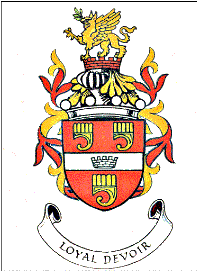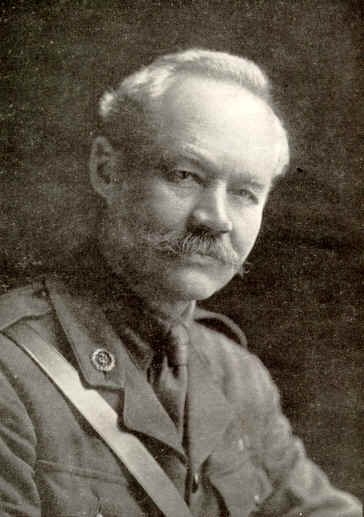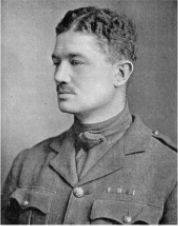|
|
 |
|

Enter subhead content here
|
 |
|

Wilfred Thomason Grenfell (1865 - 1940)
GRENFELL,
Sir WILFRED THOMASON (1865-1940), medical missionary and author, was
born at Parkgate, Cheshire, 28 February 1865, the second of the four
sons of the Rev. Algernon Sidney Grenfell, headmaster and proprietor of
Mostyn House School, Parkgate, by his wife, Jane Georgina Hutchinson,
daughter of a colonel in the Indian army. He was educated at
Marlborough, and resided at Queen's College, Oxford, for the Michaelmas
term of 1888, during which he played Rugby football for the university.
He studied medicine at the London Hospital medical school and London
University, under Sir Frederick Treves [q.v.], and qualified M.R.C.P.
and M.R.C.S. in 1886. While studying medicine he came under the
influence of Dwight Lynam Moody, the American revivalist, and of the
brothers J. E. and C. T. Studd, and for a time conducted a Sunday
school class, to which he gave instruction in the art of boxing. He was
at the same time secretary in succession of the cricket, football, and
rowing clubs in London University; and he thus became at an early an
exponent of that 'muscular Christianity' which Charles Kingsley had
made popular.
In
1887, the year after qualification, Grenfell joined the Royal National
Mission to Deep-Sea Fishermen as a medical missionary; and after
serving for five years in this capacity from Iceland to the Bay of
Biscay, he became a master mariner, and fitted out the mission's first
hospital ship. In 1892 he visited Labrador, and he was so greatly
shocked by what he later described as 'the poverty and ignorance and
semi-starvation among English speaking people of our own race' that he
decided to devote the rest of his life to the betterment of the lot of
the people of Labrador. In 1893 he established at Battle Harbour the
first hospital of what came to be known as the Labrador Medical
Mission.; and as time went on he not only built other hospitals, but he
also opened nursing stations, schools, orphanages, and social welfare
centres. When, over forty years later, he retired, he had built up an
organization that included six hospitals, seven nursing stations, four
hospital ships, four boarding schools, fourteen industrial centres,
twelve clothing distribution centres, a co-operative lumber mill, and a
seaman's institute at St. John's, Newfoundland. What his lifework, , as
an example of practical Christianity meant to the people of Labrador,
whether whites, or Indians, or Eskimos, it would be difficult to
exaggerate.
At
first the Labrador Medical Mission was financed by the Royal National
Mission to Deep-Sea Fishermen; but from an early date most of the
necessary funds were raised by Grenfell himself. He made speaking tours
through both Canada and the United States of America; and he roused
such interest and support on these trips that the Labrador Medical
Mission came to be almost better known in America than it was in
England. In 1912 the Mission to Deep-Sea Fishermen withdrew its
support; and Grenfell then organized the International Grenfell
Association, with branches in England, the United States, Canada, and
Newfoundland; and it was this association that stood behind Grenfell's
work during the latter part of his life.
Not
only be his lecture tours, but also by his books, Grenfell aroused
support for it. Beginning with Vikings of To-day (1895), he published
between 1905 and 1938 a succession of books about Labrador and a number
of religious books, which, although not outstanding for their literary
qualities,' have an engaging simplicity and modesty that endeared them
to many people. Recognition of Grenfell's work came to him in the form
of numerous honours. The university of Oxford elected him her first
honorary M.D. (1907), and he received honorary degrees from St. Andrews
University and many universities and colleges both in the United States
and in Canada; in 1915 he was elected an honorary fellow of the College
of Surgeons of America, and in 1920 a fellow of the Royal College of
Surgeons of England; he was appointed C.M.G. in 1906 and K.C.M.G. in
1927: in 1928 he was elected lord rector of St. Andrews University; in
1935 he was awarded the gold medal of the Royal Empire Society; and in
1936 he was elected an honorary fellow of Queen's College, Oxford.
In
1935 ill health compelled Grenfell's retirement from active work; and
he died at Charlotte, Vermont, 9 October 1940. In 1909 he married Anne
Elizabeth Caldwell (died 1938), daughter of Colonel Edmund Burke
MacClanahan, of Lake Forest, Illinois, and had two sons and a daughter.
Text reproduced from the Dictionary of National Biography 1931 - 1940 edited by LG Wickham Legg, by permission of Oxford
University Press.
|
 |
|
|
 |
|
|
 |
|
|
|
|

Capt. Julian Francis Grenfell (1888 - 1915)
GRENFELL,
JULIAN HENRY FRANCIS (1888-1915), soldier and poet, was born in London
30 March 1888, the eldest son of William Henry Grenfell, afterwards
first Baron Desborough, by his wife, Ethel Anne Priscilla, daughter of
the Hon. Julian Henry Charles Fane [q.v.]. He was educated at
Summerfields School, Oxford, and at Eton College, where he reached the
sixth form, and became one of the editors of the Eton College Chronicle
and of a clever but ephemeral periodical called The Outsider. His
contributions to these magazines, and, while he was still at Eton, to
the London World and Vanity Fair, give an indication of his literary
talent. In October 1906 Grenfell went up to Balliol College, Oxford,
where he spent four happy years, surrounded by a brilliant company of
friends. Only a temporary breakdown in health prevented him from taking
a degree in the honour school of literae humaniores. A man of splendid
physique and vitality, he excelled in every kind of sport, and in many
branches of athletics, rowing in the college eight, which won the
Wyfold cup at Henley in 1909, and boxing for the university.
Grenfell
had always set his heart on a military career. In 1910 he obtained a
commission, and joined the Ist (the Royal) Dragoons at Muttra; a year
later, the regiment was transferred from India to South Africa. Shortly
after the outbreak of the European War, Grenfell, with his regiment,
returned to England, and early in October 1914 accompanied it to
France. Within a few weeks his gallantry and soldierly abilities had
won him a great reputation : 'he set an example of light-hearted
courage which is famous all through the army in France,' wrote a
distinguished officer in a contemporary letter, 'and has stood out even
among the most lion-hearted'. He was awarded the Distinguished Service
Order, for a daring feat of individual reconnaissance in November1914,
and in January 1015 he was mentioned in dispatches. On 13 May 1915,near
Ypres, he was wounded in the head, and on 26 May he died in hospital at
Boulogne. He was buried in the military cemetery on the hills above
Boulogne.
On
the day his death was announced(27 May), a poem by Grenfell, Into
Battle, appeared in The Times. It was at once recognized as one of the
finest of the many fine poems inspired by the War. Sir Walter Raleigh
wrote of it, 'I don't think that any poem ever embodied soul so
completely.... Those who glorified War had always, before this, been a
little too romantic; and those who had a feeling for the reality of War
had always been a little too prosaic. It can't be done again.' The poet
laureate, Mr. Robert Bridges, included it in his anthology, The Spirit
of Man (1916). The few other poems which Grenfell left, such as, To a
Black Greyhound, Hymn to the Fighting Boar, and The Hills, are in a
lighter vein, but all show the same power of expressing poetically his
intense love of nature, his vivid delight in life, and light, and
energy.
Apart
from his poetry and his great military promise, Grenfell's short life.
is memorable for the deep impression which he made on his
contemporaries of all ages. Old and young saw in him the
personification of triumphant Youth. This impression is finely conveyed
in a sonnet to his memory by Mr. Maurice Baring, while in a family
history compiled by his mother, and privately circulated under the
title Pages from a Family Journal, there survive not only a series of
tributes to him from, many pens, but also a delightful collection of
his own letters. Of his two brothers, the elder, Gerald William
(born1890), a scholar of Balliol from 1909 to 1913, who won a Craven
scholarship in 1911 and obtained his 'blue' for tennis, was killed in
action in July 1915, and the younger, too, died from the results of a
motor accident in 1926.
[E. B. Osborn, The Muse in Arms, 1917; R. Bridges, The Spirit of Man ; Maurice Baring, Poems, 1926; The Balliol College
War Memorial Book, 1924] A.F.L.
Text reproduced from the Dictionary of National Biography 1901 - 1911 Vol. 1, by permission of Oxford University Press.
Enter supporting content here
|
|
|
 |

